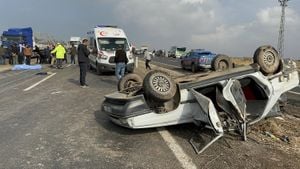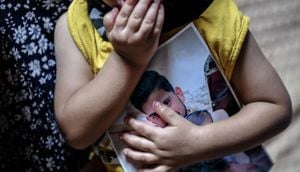NASA is facing significant challenges as two astronauts, Butch Wilmore and Suni Williams, find themselves unexpectedly stranded aboard the International Space Station (ISS). They launched aboard Boeing's Starliner on June 5, intending for an eight-day mission, but complications with the capsule have left them orbiting for longer than expected.
Since reaching the station, Starliner has experienced multiple technical issues. These include five helium leaks, thruster failures, and issues with its propellant valves, raising substantial safety concerns about the spacecraft's ability to make the return trip to Earth.
NASA had to postpone the planned return three times. There is currently no set date for their return, but there is internal discussion about targeting July 6 for departure.
Under the circumstances, if the crew capsule cannot return safely, NASA is pondering the possibility of sending Wilmore and Williams back to Earth on SpaceX's Crew Dragon. This lifeboat option, though unexpected and embarrassing for Boeing, remains on the table should Starliner's situation worsen.
Adding to the pressure is the limited docking space available on the ISS, which accommodates only two US vehicles at any one time. This means Starliner would need to depart before SpaceX's next capsule arrives, complicate matters entirely.
Ken Bowersox, NASA's space operations mission chief, insists they still have some time to decide on the safest course of action. “We’ve got time available before we bring Starliner home and we want to use it wisely,” Bowersox stated.
Stress levels would understandably be high on the space station, but the astronauts are keeping busy. Their tasks include maintaining the ISS's systems and performing necessary checks on their spacecraft.
NASA emphasized the need for careful analysis before making any rash conclusions concerning Starliner’s fate. The agency aims to make a decision by the end of the week, weighing all data at their disposal.
Wilmore and Williams are both veteran astronauts who have spent considerable time aboard the ISS during previous missions. Their experience is invaluable as they navigate this unprecedented situation.
NASA's partnership with Boeing and SpaceX was established after the Space Shuttle program ended, with hopes of restoring reliable access to the ISS with commercial vehicles. While SpaceX has successfully transported astronauts since its first manned flight in 2020, Boeing's Starliner has faced unexpected hurdles since its inception.
The current predicament serves to remind all parties involved of the risks and challenges inherent in space travel. Boeing has incurred substantial financial losses with Starliner, totaling around $1.5 billion, as they strive to address these unforeseen complications since project inception.
Overall, the mission highlights the importance of developing multiple avenues of safe passage to and from the ISS. Ensuring the astronauts return safely is the number one priority as NASA continues to evaluate the situation.
Despite all the challenges, NASA remains hopeful for both the astronauts' safe return and the eventual successful operation of the Starliner. With so many components at play, the stakes couldn't be higher.
This turn of events is not just about rescuing astronauts but maintaining trust and reliability between NASA and its commercial partners as they venture forward.
Wilmore and Williams are reportedly doing well, maintaining their spirits as professionals. “They will do what we ask them to do. That’s their job as astronauts,” remarked Joe Acaba, NASA’s chief astronaut.



